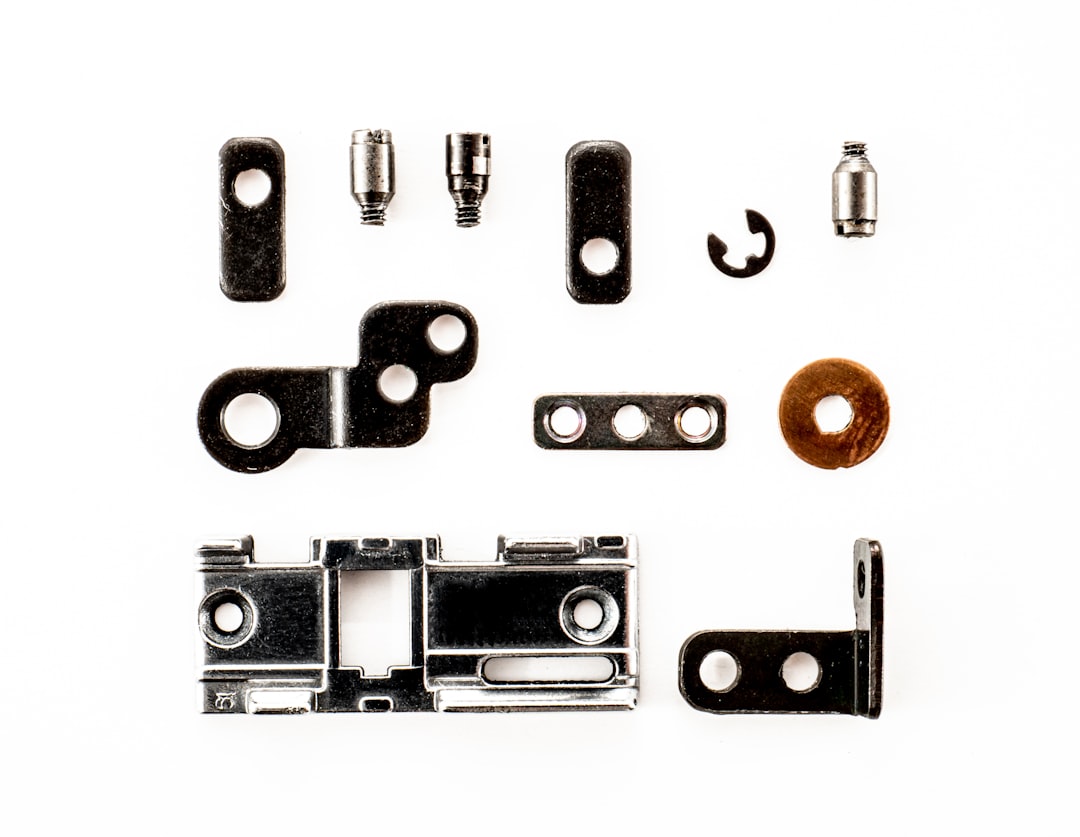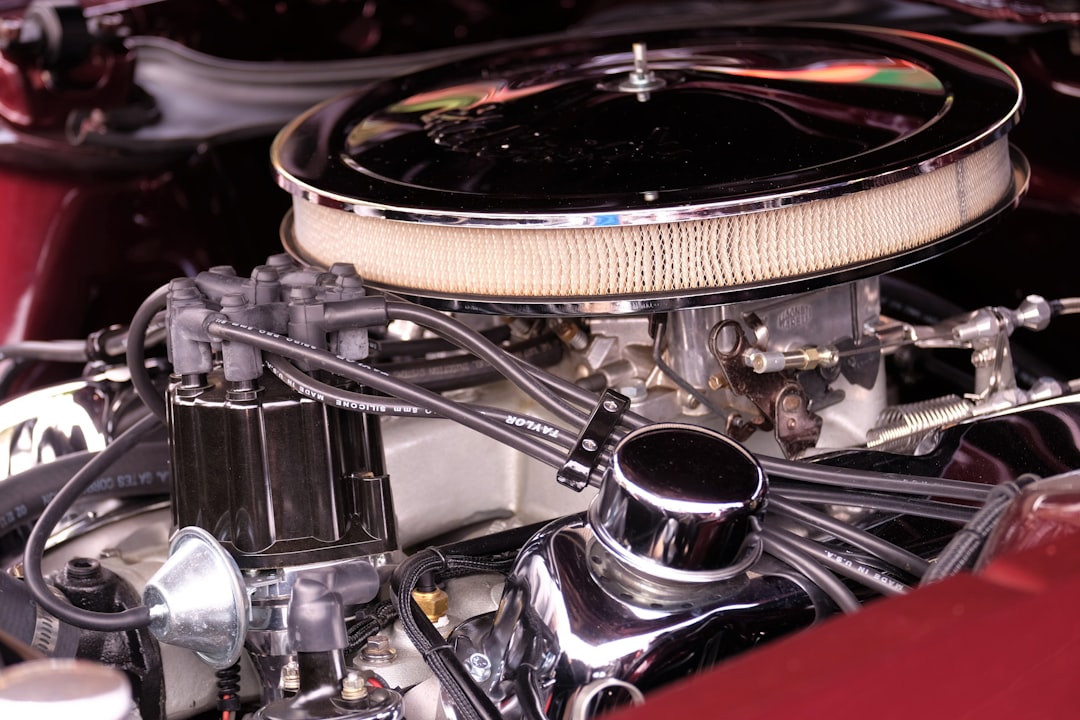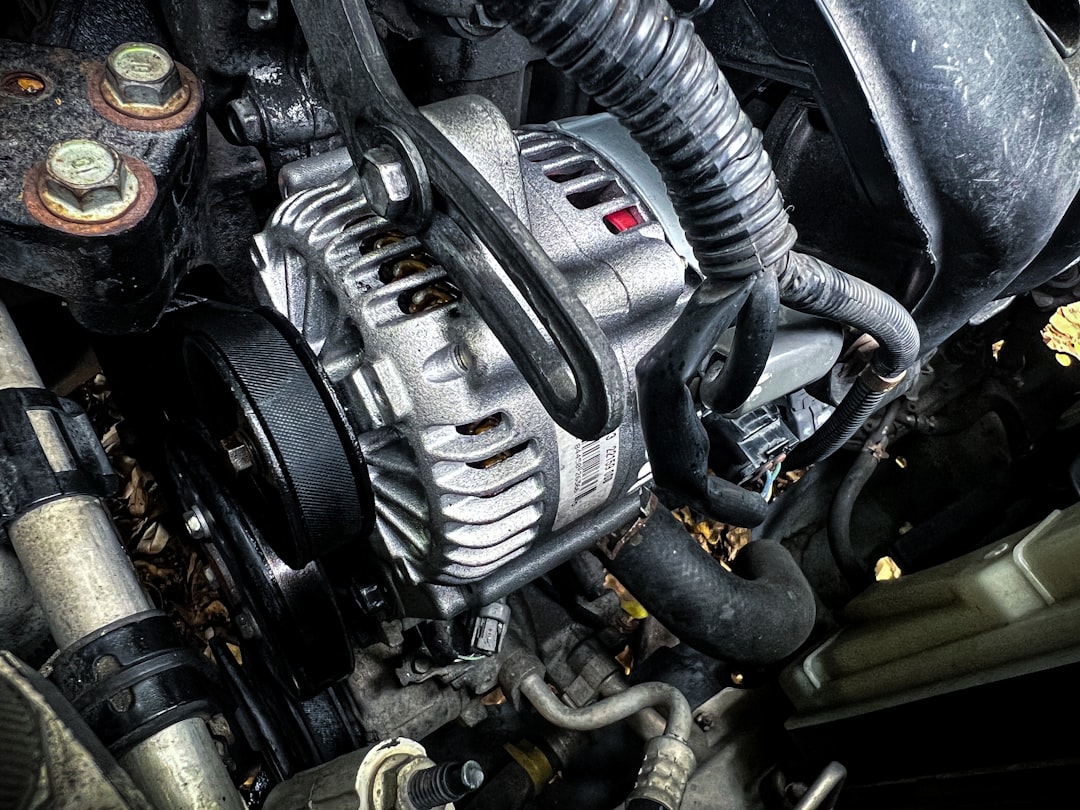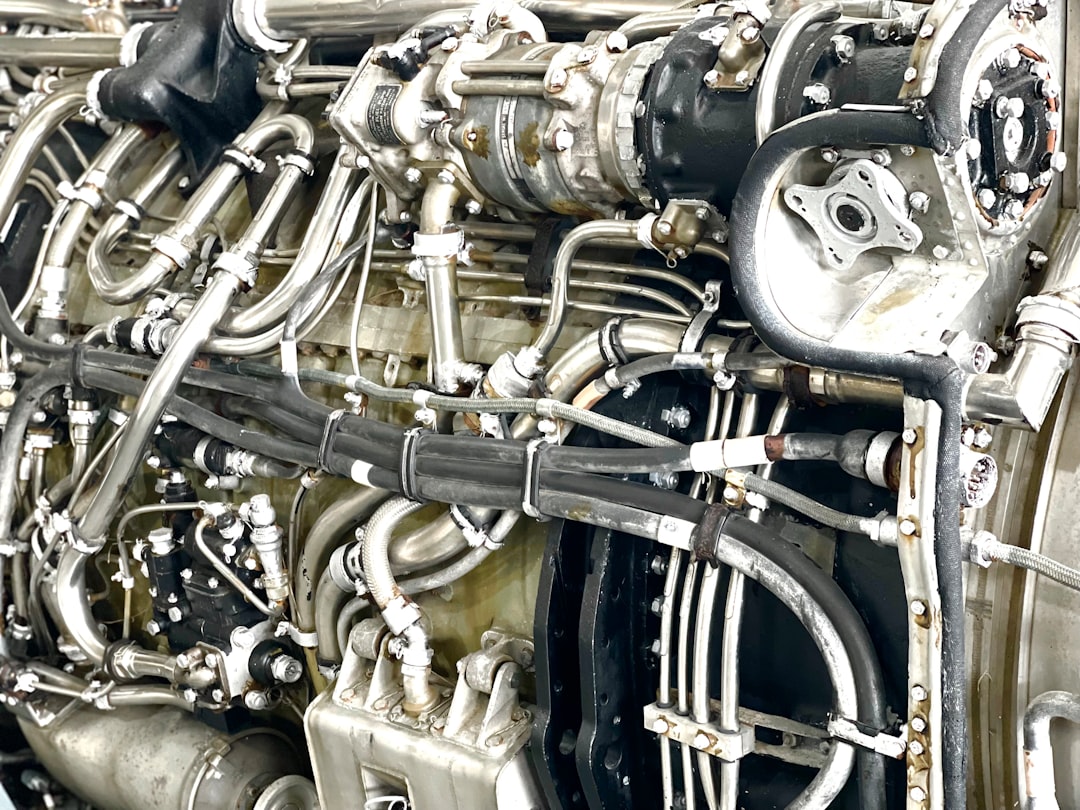

Engage prospects with a scan and streamline customer engagement with FREE QR code marketing tools by Sona – no strings attached!
Create a Free QR CodeFree consultation

No commitment

Engage prospects with a scan and streamline customer engagement with FREE QR code marketing tools by Sona – no strings attached!
Create a Free QR CodeFree consultation

No commitment
Specialty auto parts retailers are navigating an industry where the shift to digital is transforming every part of the business, from lead generation and customer engagement to inventory management. Yet many still struggle with missed opportunities: potential customers may browse store aisles or printed catalogs, express interest in rare components, and then slip away without leaving a trace in any CRM or sales system. This missing link between physical interest and digital follow-up leads to lost sales and ongoing frustration, knowing demand exists but lacking the connection to pursue it.
QR codes have matured into essential tools for connecting physical touchpoints with digital actions, addressing a core challenge around visibility into in-store engagement. With a single scan, potential buyers can access detailed vehicle specs, submit inquiries for hard-to-find parts, or sign up for loyalty programs, all without tedious data entry or unnecessary app downloads. Retailers benefit from streamlined lead capture, actionable conversion tracking, and an increased capacity to personalize follow-up. Modern solutions allow businesses to detect high-value prospects who might otherwise remain anonymous, bringing previously untracked visitors into active marketing and sales workflows. For a broader marketing view, see Sona QR’s marketing guide. Retail case studies also show clear gains from QR adoption, including retail QR innovations.
Integrating QR codes into physical assets like product displays, invoices, or direct mail helps specialty auto parts retailers achieve real-time engagement, better lead quality, and stronger attribution, bringing offline interactions into the measurable, ROI-driven digital fold. Both impromptu shoppers and repeat business accounts can be identified early, engaged efficiently, and guided seamlessly from interest to purchase. To explore retail-specific tactics, visit Sona QR’s retail industry guide.

Specialty auto parts retailers face the ongoing challenge of capturing leads at the moment of interest, especially when many prospects prefer to browse anonymously and may never fill out a traditional form. Manual product inquiry sheets, physical rebate cards, and printed mailers are fraught with inefficiencies and often fail to translate in-person curiosity into actionable follow-up, leaving critical buyers unidentified in the CRM. QR codes remove friction by turning any surface into a smart entry point that captures contact details, preferences, and intent signals right when the shopper is most engaged. For form-driven flows, see Sona QR’s guide to Google Forms QR.
Replacing analog processes is where the gains compound. Instead of clipboards for special-order requests, a QR code on the shelf can launch a prefilled form tied to a specific SKU and vehicle fitment, then route it to the correct salesperson. Rather than pushing paper catalogs that go dark after they leave the store, add QR codes that link to dynamic landing pages with current availability and pricing. Even warranty registrations and loyalty enrollments can shift from time-consuming counter conversations to quick mobile flows that populate your CRM automatically.
By leveraging these digital workflows, specialty auto parts retailers can reduce missed prospects and accelerate response times. With platforms like Sona QR’s product overview, you can detect high-fit companies or individual shoppers who engage but do not immediately convert, then trigger targeted follow-ups via email, SMS, or sales alerts. The result is a consistent flow of qualified leads captured at the exact moment of interest and guided efficiently toward purchase.

Persistent hurdles plague the specialty auto parts retail landscape, with missed opportunities and a lack of lead visibility among the most disruptive. Offline-to-online moments, such as a customer finding a hard-to-source part in-store and desiring instant availability data, often stall because the handoff from physical to digital is too slow or manual. This friction means potential leads remain unknown, outreach is delayed, and nimble competitors can strike first. When the difference between a closed sale and a lost opportunity is a same-day follow-up, speed and clarity are essential.
QR codes provide a critical bridge that meets both customer expectations and operational needs. Instead of requiring customers to download an app or fill out paper registration cards, QR codes let shoppers scan and complete an action in seconds: register a warranty, activate a discount, request technical specs, or submit a quote request for a rare part. With dynamic QR codes, links can be updated when promotions change or catalogs are revised, so printed materials remain relevant without reprinting costs. Every scan is tracked, which means you see when, where, and on what device the engagement occurred. These signals feed more accurate attribution and ROI measurement, which in turn helps prioritize the channels and placements that drive the most revenue. For measurement strategy, read Sona’s take on offline attribution.
Selecting the right QR code format ensures that each scan launches the best next action for the customer. In specialty auto parts, most high-value outcomes revolve around information access, inquiry submission, and post-sale engagement. Matching formats to use cases keeps experiences smooth and measurable.
With Sona QR, you can generate and manage all of these formats from one dashboard, using dynamic codes that remain flexible over time. For auto parts retailers, prioritize web links and forms for compatibility checks, inventory status, and warranty or support workflows. Reserve SMS or email formats for fast triage of special orders or urgent questions from professional installers and fleet managers.
Growth in specialty auto parts retail often comes from capturing and converting interest that already exists. Customers are researching in the aisles, comparing options on the go, and weighing price versus availability. QR codes let you intercept that interest, answer questions in real time, and collect data you can act on later.
Place QR codes where buying signals are strongest. On product shelving and bin labels, QR codes can connect shoppers to real-time fitment guides and installation tips, which reduces returns and increases confidence. At the point of sale, codes can expedite loyalty program enrollment or digital receipts, reducing the burden on staff while improving retention. In packaging, a code can encourage buyers to register their purchase, download install instructions, or order complementary parts, all while associating the buyer with a specific SKU for future recommendations. If you serve B2B buyers, review QR opportunities for wholesale.
Retailers who instrument these touchpoints with real-time tracking are better positioned to act on high-intent signals before competitors do. When a shopper scans for fitment and then leaves the store, an automated message with an in-stock alert or a price match can bring them back. When a fleet manager scans an invoice to reorder, a sales rep can follow up with volume pricing within minutes.

These touchpoints, when tracked and analyzed, allow retailers to segment customers by behavior and deliver tailored offers that support both acquisition and retention. Combining scan data with SKU, aisle, or campaign details gives your team the context needed to prioritize follow-ups and craft relevant recommendations.
Each QR code scan generates a data point that reveals who is interested and how close they are to buying. Specialty auto parts retailers often rely on broad remarketing that wastes spend and dilutes impact. By assigning unique QR codes to displays, flyers, packaging, and invoice inserts, you can identify shoppers showing distinct intents, such as evaluating upgrades, seeking technical help, or preparing bulk orders.
Begin by tagging codes according to funnel stage and context. For awareness, codes on window signage or community event flyers can drive to educational content or category pages. For consideration, codes on shelf labels and spec sheets can lead to compatibility tools and install guides. For conversion, codes on pricing sheets, coupons, or financing materials can move buyers to checkout or to a quote request. Each scan builds an audience aligned to a particular need and journey stage.
Advanced tools can surface anonymous engagements and enrich them with firmographic or demographic data when possible. For specialty auto parts, this helps you identify high-fit installers, local shops, or enthusiasts who are likely to influence community demand.
Connecting offline activity to digital channels remains a core challenge for specialty auto parts retailers. Print collateral, in-store signage, packaging, radio spots, and local sponsorships all produce interest that is hard to track. QR codes tie these touchpoints directly to measurable digital journeys, ensuring that every scan can be attributed, analyzed, and funneled into automated workflows.
A connected funnel starts with consistent calls to action and continues with landing pages tailored to the physical context. If someone scans a code near the exhaust aisle, show them performance exhaust options, compatibility tools, and install content. If they scan from a direct mailer about winter prep, send them to a curated collection for batteries, wiper blades, and fluids. With Sona QR, you can standardize these journeys, monitor performance in real time, and sync engagement to your CRM and ad platforms. Explore Sona QR’s use case library for channel-specific ideas.
QR codes act as the offline onramp to your digital marketing engine. Centralizing management through Sona QR ensures you can update destinations, monitor performance, and tie scans to downstream outcomes without juggling fragmented tools or spreadsheets.
Clarify what you want the scan to accomplish. For auto parts retailers, high-impact objectives include instant fitment lookup on the shelf, loyalty enrollment at the counter, warranty activation from packaging, or a special-order request for rare components. Pick one outcome per QR code to keep the next step obvious and reduce confusion.
Tie the use case to a measurable business result. If you want more special orders, connect the QR to a prefilled request form and track completed forms and close rates. If you want to reduce returns, send shelf scans to fitment guides and measure return percentage changes in that category. This alignment keeps your campaign focused and evaluation straightforward.
Select the format that best fits your outcome. Static codes work for evergreen assets such as an install guide PDF that will not change. Dynamic codes provide flexibility for campaigns, allow editing destinations, and unlock tracking and optimization. In retail environments where promotions, inventory, and offers change frequently, dynamic codes are the practical default.
Consider privacy and compliance. If you will collect personal data, ensure the destination includes proper consent language for email or SMS, and that your tools handle data securely. Sona QR supports dynamic codes, UTM tagging, and integrations that keep data organized and compliant.
The best QR codes are unmistakably scannable and visually aligned with your brand. Add a clear frame, your logo, and a short benefit-driven call to action, such as Scan for fitment or Scan to reorder. Maintain ample white space around the code and size it appropriately for the viewing distance, which is especially important on aisle signage and window clings.
Test thoroughly before launch. Scan from different devices, angles, and lighting conditions. Validate that the destination loads quickly, especially on cellular connections in a store. If a page loads slowly or is not mobile friendly, the campaign will underperform regardless of placement.
Roll out codes to placements that match your audience behavior and your growth plan. In-store endcaps, shelf labels, and counter mats tend to generate the most volume. Invoices, receipts, and packaging sustain engagement after the purchase. Direct mail drives fresh demand and reactivates lapsed customers. Trade shows and community events capture high-intent contacts in concentrated time windows.
Stagger your deployment to isolate impact. Start with a category or a handful of stores, then expand. Use unique codes per placement so you can see which channels convert better and where to invest.
Measurement turns scans into outcomes. Use Sona QR to track scans by location, time, device, and campaign. Add UTM parameters to every destination so you can attribute traffic and conversions in your analytics tools. Build dashboards that show scan volume, click-through, form completion, and revenue for each code or placement. For modeling improvement, review Sona’s take on multi-touch attribution.
Optimize in cycles. A/B test landing page headlines and calls to action. Adjust placements if a code underperforms in a particular aisle. Rotate offers monthly and update dynamic codes without reprinting. Share results with store teams so they see the impact and continue to promote scanning behavior.

A major gap in specialty auto parts retail has been the inability to tie in-store and offline engagements directly to closed sales or repeat orders. Marketing ROI often remains unclear when a paper catalog or shelf display cannot tell you who interacted or what happened next. QR codes solve this by tracking every scan event and linking engagement to downstream actions in your e-commerce site, B2B portal, or CRM. For context on measurement quality, see Sona’s view on revenue attribution.
With proper instrumentation, each scan becomes the first touch in a measurable journey. Automated CRM syncing lets you attribute scan events to outcomes such as completed quote requests, orders, and support tickets. When you assign unique codes to placements and campaigns, you can compare conversion by asset, store, or region. These insights support more accurate demand forecasting, better budget allocation, and stronger accountability across marketing and operations.
Sona QR captures detailed scan data, including time, device, location, and campaign source. Sona.com extends that visibility by connecting anonymous scans to known buyers through identity resolution and multi-touch attribution. You can visualize how QR engagement contributes to pipeline and revenue, and how it interacts with website visits, ad clicks, and email engagement. The result is a unified picture of buyer progression, from first scan to purchase and beyond.
Companies that layer analytics onto physical touchpoints uncover patterns that were previously invisible. They learn which aisles need better signage, which store layouts drive engagement, and which campaigns lift both online and in-store sales.
Expanding the impact of your QR program requires consistent execution, staff enablement, and smart automation. Focus on placements and tools that match how your customers shop, then use data to tighten the loop between scan and purchase.
Creative deployments can also unlock new value. Add a small QR sticker to parts bins for quick internal reordering. Print QR codes on service reminder cards that link to a seasonal checklist and appointment booking. Include a QR on a shop’s courtesy vehicle magnet that links to local store inventory and a new customer discount.

These examples show how specialty auto parts businesses use QR codes to connect physical interest to digital action, all while capturing the data needed to scale what works.
In specialty auto parts retail, every display, invoice, and packaging slip is a gateway to digital revenue. The problem of unidentified demand is best addressed by turning these touchpoints into sources of actionable customer data and lead signals. QR code campaigns, when augmented by real-time segmentation and robust analytics, offer a scalable way to capture intent at its source, guiding prospects from a moment of interest to purchase, support, or upsell. Retailers who make every scan count will stem lost opportunities and position themselves at the forefront of the industry.
Specialty auto parts retailers stand at the intersection of tradition and technology, where each physical interaction is an opportunity to connect and convert through digital means. The challenge of missing high-value prospects, lacking visibility into anonymous engagement, and failing to attribute offline actions to real revenue has long held the industry back. QR codes are no longer a marketing add-on, but a foundational strategy for recapturing lost opportunities, simplifying operations, and delivering seamless retail experiences. With Sona QR for code management and Sona for attribution, you can launch trackable campaigns in minutes, tie scans to revenue, and continuously improve results. Start by instrumenting your highest-traffic touchpoints, measure what happens, and iterate quickly. In an environment defined by choice and competition, ensuring every scan unlocks both insight and opportunity is now a key driver of sustained growth. Start creating QR codes for free.
QR codes have transformed specialty auto parts retailers from traditional storefronts into dynamic lead-generation hubs. By integrating QR codes, retailers can capture qualified leads effortlessly, enhance customer engagement, and streamline the path from interest to purchase. Imagine knowing exactly which in-store displays or promotional materials drive the most inquiries and sales—turning every physical interaction into a measurable opportunity.
With Sona QR, you gain access to dynamic, trackable QR codes that you can update instantly without the need to reprint labels or signage. This flexibility allows you to optimize campaigns in real time and connect every scan directly to customer data and revenue. Start for free with Sona QR today and accelerate your lead capture efforts, turning casual browsers into loyal customers.
Specialty auto parts retailers can use QR codes on in-store displays, catalogs, invoices, and packaging to capture leads, provide real-time product information, enable easy special-order requests, and automate warranty registrations, thereby connecting physical touchpoints to digital workflows and improving operational efficiency.
QR codes help auto parts retailers by enabling high-quality lead capture, improving customer engagement, increasing conversion tracking accuracy, reducing manual data entry, providing dynamic content updates without reprinting, and allowing detailed scan analytics that support better marketing attribution and inventory management.
QR codes improve customer experience by offering instant access to vehicle specs, compatibility tools, install guides, and pricing information without app downloads, simplifying inquiries and warranty registrations, and enabling quick loyalty program signups, all through easy mobile scanning.
Innovative uses of QR codes include placing them on shelf talkers to link to fitment guides and install videos, embedding them in catalogs for personalized offers, integrating them into invoices for automated reorder forms, using them at trade shows for lead capture, and adding them to packaging for post-sale support and warranty activation.
QR codes on invoices, receipts, and warehouse shelves can launch prefilled reorder forms or direct buyers to B2B portals, reducing order lag, protecting key accounts, and enabling faster reordering by professional buyers and fleet managers.
Use Sona QR's trackable codes to improve customer acquisition and engagement today.
Create Your FREE Trackable QR Code in SecondsJoin results-focused teams combining Sona Platform automation with advanced Google Ads strategies to scale lead generation

Connect your existing CRM

Free Account Enrichment

No setup fees
No commitment required

Free consultation

Get a custom Google Ads roadmap for your business






Launch campaigns that generate qualified leads in 30 days or less.
